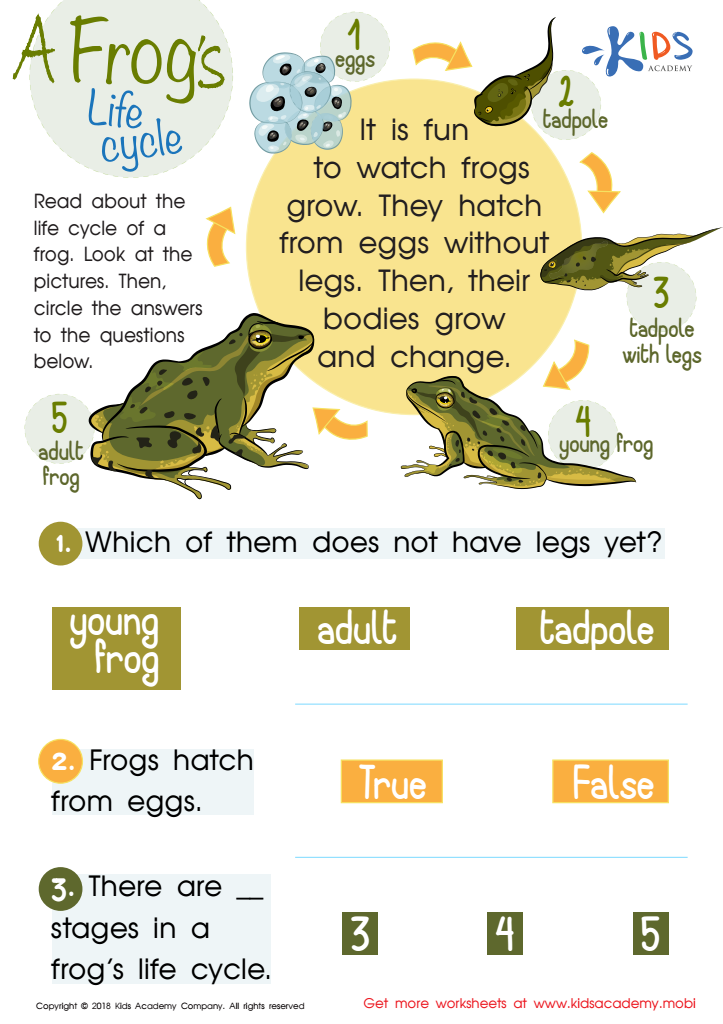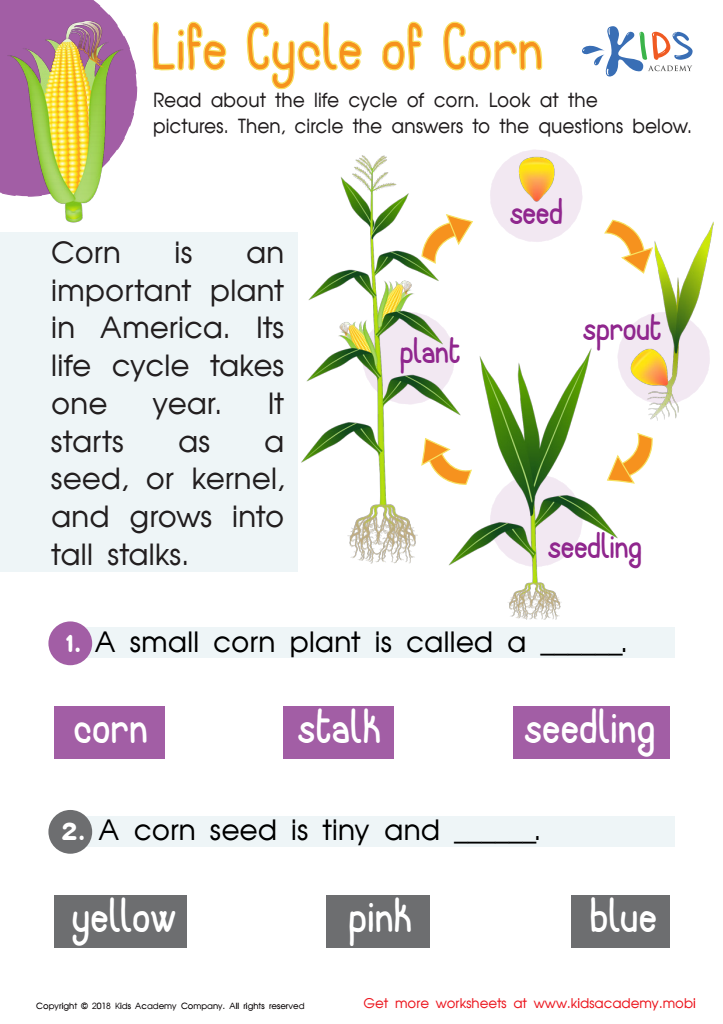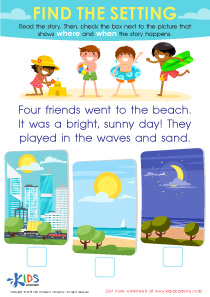Understanding life cycles Easy Reading Non-Fiction Worksheets for Ages 6-8
3 filtered results
-
From - To
Discover our "Understanding Life Cycles Easy Reading Non-Fiction Worksheets" designed for ages 6-8. These engaging, colorful sheets introduce young learners to the fascinating world of life cycles in an easy-to-understand format. Perfect for early grade readers, the worksheets blend simple text with vibrant visuals, making learning about animals and plants both fun and educational. Each worksheet aims to enhance comprehension skills, promote critical thinking, and spark curiosity about nature. Ideal for classroom or home use, these resources provide a foundational understanding of life cycles, fostering a love for reading and science from an early age.


A Frog’s Life Cycle Worksheet


Life Cycle of a Frog Worksheet


Life Cycle of Corn Worksheet
Understanding life cycles through easy reading non-fiction is important for children ages 6-8 because it lays a foundational understanding of nature, science, and the continuity of life. At this young age, children's curiosity about the world around them is at a peak, and age-appropriate texts can satiate this curiosity by providing clear, accessible explanations of complex processes.
For parents and teachers, incorporating non-fiction books about life cycles into children's reading repertoire helps develop critical thinking and observation skills. By learning about the life stages of plants, animals, and even humans, children can better grasp the interconnectedness of life on Earth. This knowledge fosters a sense of respect for living organisms and the environment, which is crucial for raising environmentally conscious individuals.
Moreover, these books often feature vibrant illustrations and straightforward language, making them engaging and easier for early readers to comprehend. They support literacy development by expanding vocabulary and enhancing reading comprehension through factual context. Handling real-world themes makes young readers more knowledgeable and confident students.
Overall, understanding life cycles equips young minds with essential scientific knowledge while nurturing their sense of wonder and responsibility towards nature. It’s a vital step in preparing children to become informed, empathetic, and thoughtful global citizens.
 Assign to My Students
Assign to My Students














